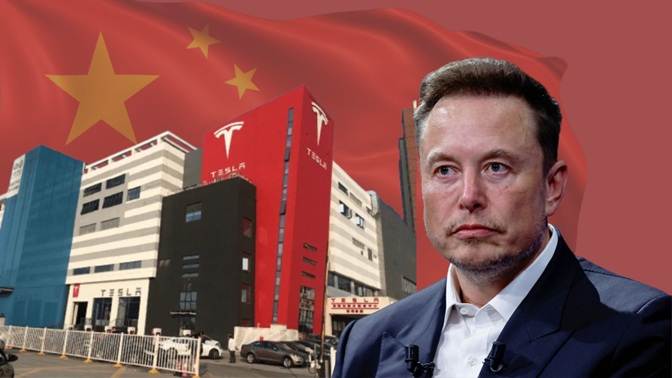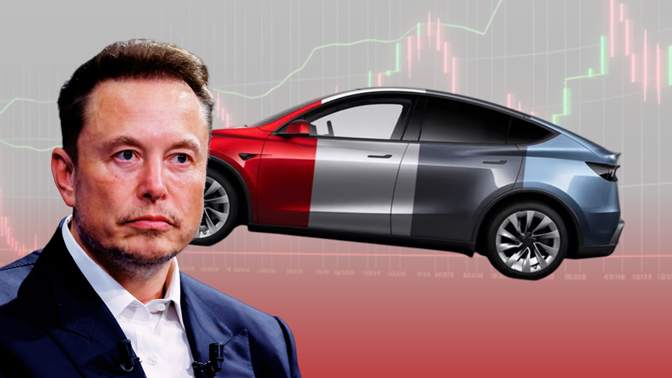BYD Sealion 7 vs Tesla Model Y: Can the Chinese Crossover Shake Up the EV Game in Europe?
As electric vehicles continue to surge in popularity, competition is heating up across all segments—especially in the electric crossover space. Tesla Model Y has long been a front-runner in this field, blending performance, practicality, and cutting-edge tech. But a new challenger from China has entered the European market with big ambitions. Meet the BYD Sealion 7, an EV aiming to take on Tesla’s best-seller head-on.

But is the Sealion 7 good enough to tempt buyers away from the Model Y? UK-based car reviewer Mat Watson from Carwow put both cars to the test, and what he found might surprise you.
Sealion 7: The BYD Take on a Practical EV
The Sealion 7 is the SUV counterpart to BYD’s Seal sedan. While Tesla leans into a futuristic and ultra-minimalist design language, BYD takes a more traditional route. That’s something that could work in its favor—many drivers still prefer having physical buttons over screen-only controls.
From the outside, the Sealion 7 presents itself as bold but conventional, with a face that unmistakably shows off its Asian design roots. It’s clean, confident, and not trying too hard to look like a spaceship on wheels.
Inside, it’s more of the same: a swooping dashboard layout, plush materials, and a rotating infotainment screen that gives the cabin a modern yet familiar vibe. Unlike Tesla, BYD includes actual buttons and knobs for key controls—music to the ears of anyone who doesn’t love touch-only systems.
Build Quality and Practical Touches
One thoughtful touch in the Sealion 7 is its mechanical door handles. They power-retract into the doors for better aerodynamics, but when needed, you physically pull them to open the car. No electronic trickery here—just good old-fashioned functionality. That’s important, especially in situations where your battery might be dead and you don’t want to be locked out of your own car.
However, while the Sealion 7 brings a lot to the table, it doesn’t beat the Model Y in every category—especially when it comes to overall practicality.
Space & Practicality
Tesla’s Model Y may not be a head-turner in the design department, but it wins big when it comes to storage space and family-friendliness. It offers a larger trunk and frunk, giving it significantly more cargo room than the BYD. In fact, the Model Y is so roomy that in some markets, it can be ordered with an optional third row—something the Sealion 7 simply can’t accommodate.
Passenger comfort is a closer match. The Sealion 7 actually performs better when it comes to fitting three adults across the back seat, offering more shoulder room than the Model Y. So, if you’re regularly carrying more than two backseat passengers, that might be a check in BYD’s favor.
Range & Charging
When it comes to real-world range and charging performance, Tesla still leads the pack. The Model Y Long Range boasts up to 386 miles (622 km) on the WLTP cycle. That’s impressive, especially when you consider that BYD offers a bigger 91.3 kWh battery in the Sealion 7, yet it only manages 312 miles (502 km).
Interestingly, BYD’s Sealion 7 uses an 800-volt architecture, which should theoretically offer faster charging. However, Tesla’s more efficient 400-volt system still charges faster and offers better energy efficiency. That’s a testament to Tesla’s optimization across the board—from software to battery cooling to powertrain design.
Pricing: Tesla Still Has the Edge
Despite all the improvements in design and comfort, the BYD Sealion 7 can’t undercut Tesla on price. In most European markets, the Model Y remains slightly cheaper, even when matched with similar battery sizes and features.
For cost-conscious buyers looking for maximum value, that’s a significant win for Tesla. And when you factor in Tesla’s widespread Supercharger network, established brand recognition, and frequent over-the-air updates, it becomes a tough package to beat.
Sealion 7 vs Model Y vs Zeekr 7X
| Feature / Spec | BYD Sealion 7 | Tesla Model Y (Long Range) | Zeekr 7X |
|---|---|---|---|
| Battery Size | 91.3 kWh | 75 kWh | ~100 kWh (estimated) |
| Range (WLTP) | 312 miles / 502 km | 386 miles / 622 km | ~370 miles / 595 km (estimated) |
| Architecture | 800-volt | 400-volt | 800-volt |
| Charging Speed | Moderate (lower peak than Tesla) | High (more efficient) | High |
| Interior Style | Traditional + rotating screen | Minimalist, sleek | Premium, luxury feel |
| Physical Buttons | ✅ Yes | ❌ Mostly screen-based | ✅ Yes |
| Rear Seat Comfort | ✅ Great for 3 adults | 🤏 A bit tight for 3 | ✅ Spacious |
| Cargo Space | Moderate | ✅ Larger trunk + frunk | ✅ Large cargo area |
| Software Features | Basic to mid-level | ✅ Industry-leading OTA updates | ✅ Advanced with extra features |
| Starting Price (Europe) | €50,000+ (estimated) | ✅ ~€48,000+ | €55,000+ (estimated) |
| Overall Appeal | Traditional + smart features | ✅ Balanced + polished | 🥇 Premium & future-ready look |
Zeekr 7X Enters the Chat
While the Sealion 7 is fighting hard to catch up, there’s another EV emerging as a potential dark horse in the European market—the Zeekr 7X. Recently reviewed in Europe, this crossover is priced above the Model Y, but it delivers a more luxurious experience. It features high-end touches like powered doors and a sleek, mature design that’s drawing praise from early testers.
The Zeekr might not be as widely known, but it represents a new wave of premium Chinese EVs that are less about catching up—and more about redefining expectations.
There’s no denying that the BYD Sealion 7 is a solid contender. It delivers a comfortable, well-built interior, practical features, and a more traditional driving experience that many will appreciate. However, it still falls short in some crucial areas—range, charging, cargo space, and price—where Tesla simply does better.
The Model Y, especially after its recent Juniper refresh, is more polished than ever. With upgraded suspension, a more premium interior, and subtle exterior tweaks, it’s no longer just the smart choice—it’s becoming the complete package. Still, BYD is on the right track, and competition like this is great for consumers. As these brands push each other to improve, drivers can look forward to better EVs at better prices across the board.
PEOPLE WHO READ THIS, ALSO READ




